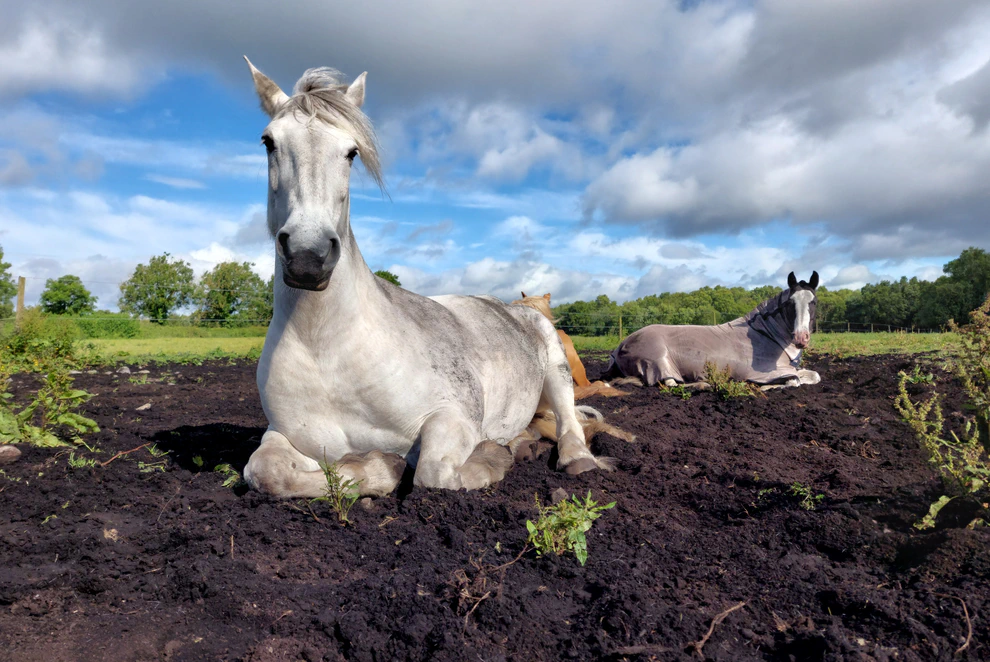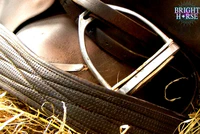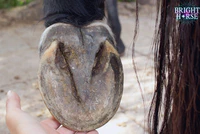Part 2: Overcoming Fears with Desensitisation
Horses are naturally wary creatures. As prey animals, their survival instincts are finely tuned to detect and react to potential threats. A damn sight better then us! So we often over look this when our horses stop, drop the shoulder and spin at a shadow… This innate caution, while crucial in the wild, often translates to fear or avoidance of new objects and situations in their human-managed lives. In other words; lets stay away from the scary shit cos it might eat me!
In Part 2 of our series, we explore the concept of ‘desensitisation’ (which I will use to talk about about counterconditioning and systematic desensitisation as a broad term)—a science-backed approach to helping horses overcome fears. This technique builds on the principles of learning theory discussed in Part 1, showing you how to help your horse navigate the world with greater confidence and trust.
Desensitisation is a technique rooted in learning theory that helps horses adapt to and feel less fearful of novel or unsettling stimuli. Horses are highly sensitive to their environment, making them prone to ‘overreacting’ to perceived threats. At least it feels like an overraction to us, to them it’s perfectly reasonable. To effectively use desensitisation in training, it’s essential to understand how horses’ evolutionary history shapes their responses and learning processes, and I would argue: be empathetic to the way they see the world compared to us humans.
Horses as Prey Animals: How Instinct Shapes Behaviour
Horses evolved on open grasslands, where survival depended on their ability to detect and escape predators quickly.
New or unfamiliar objects can trigger a horse’s flight response, as their instinctive thought is often, “Will it eat me?” This is a logical reaction for a prey animal. Our role as trainers and caretakers is to guide horses through these fears and help them see that not everything is a threat.
Traditional methods, such as relying heavily on negative reinforcement or positive punishment, can exacerbate a horse’s stress levels, particularly when they are already on edge. Elevated stress impairs learning and can make fear-related behaviours worse.
This evolutionary history has left them with key traits that influence their behaviour and learning:
- Highly Reactive to Threats: Horses are hardwired to flee from danger. This flight response can be triggered by new or sudden stimuli, making training a delicate balance of managing fear and fostering trust.
- Prone to One-Trial Learning: A single negative experience can condition a horse to fear a stimulus, sometimes permanently. While this rapid learning helps in the wild, it can create challenges in training, as extinguishing these learned fears often takes considerable time and care.
- Hyperaware of Their Environment: Constantly scanning for potential threats, horses can find it difficult to concentrate on training tasks, especially in unfamiliar settings where their vigilance is heightened.
By recognising these instincts, trainers can create more effective strategies to reduce fear and build confidence in horses. This is where desensitisation offers a more effective, humane alternative.
What is Desensitisation?
Desensitisation involves systematically exposing a horse to a potentially frightening stimulus in small, manageable increments. The goal is to help the horse become less sensitive to the object or situation, fostering curiosity and confidence instead of fear.
Think of it as finding the sweet spot—the perfect balance where your horse is slightly uncertain but not overwhelmed. It’s not about pushing them until they panic but instead encouraging them to take small, confident steps toward overcoming their fear.
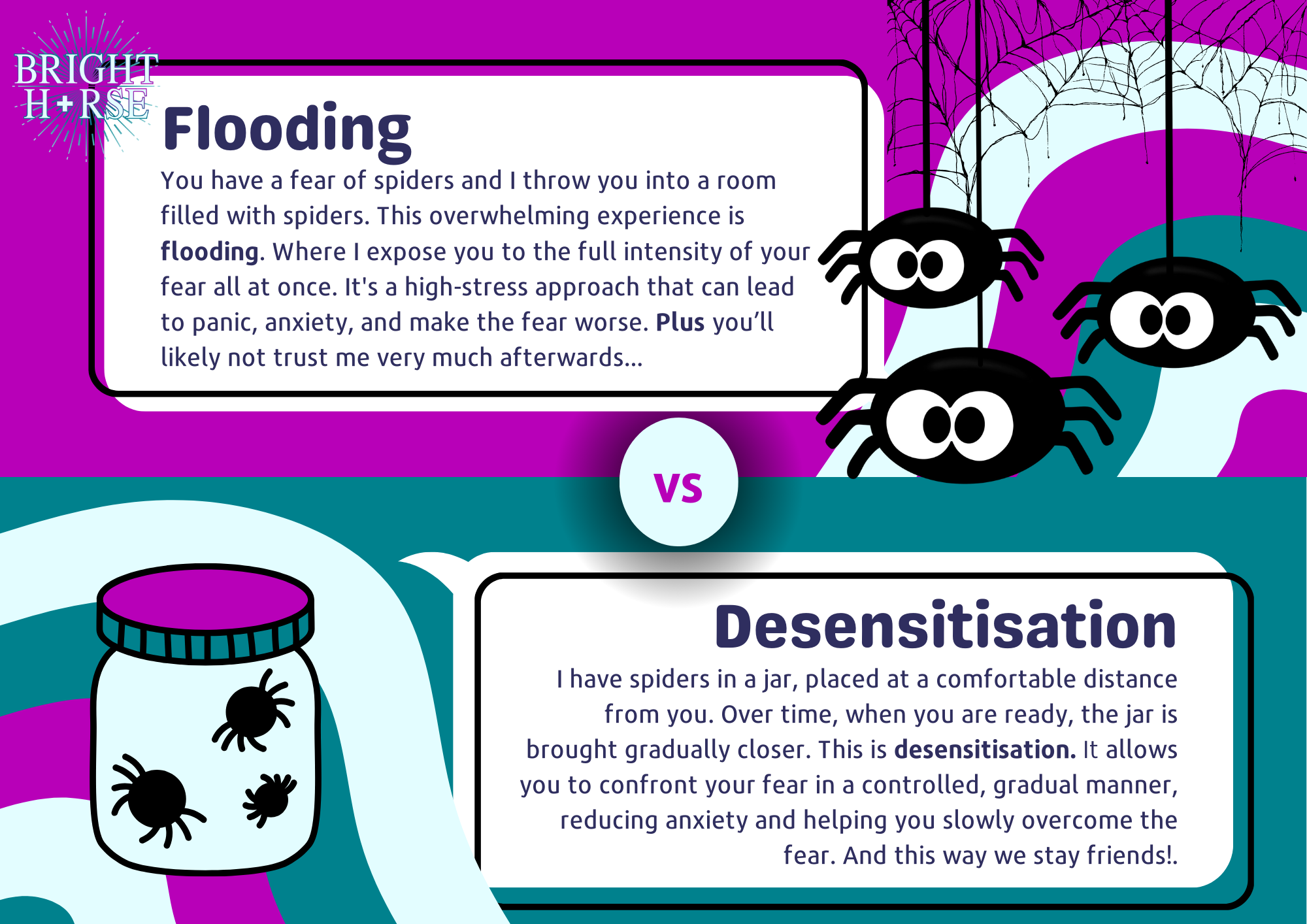
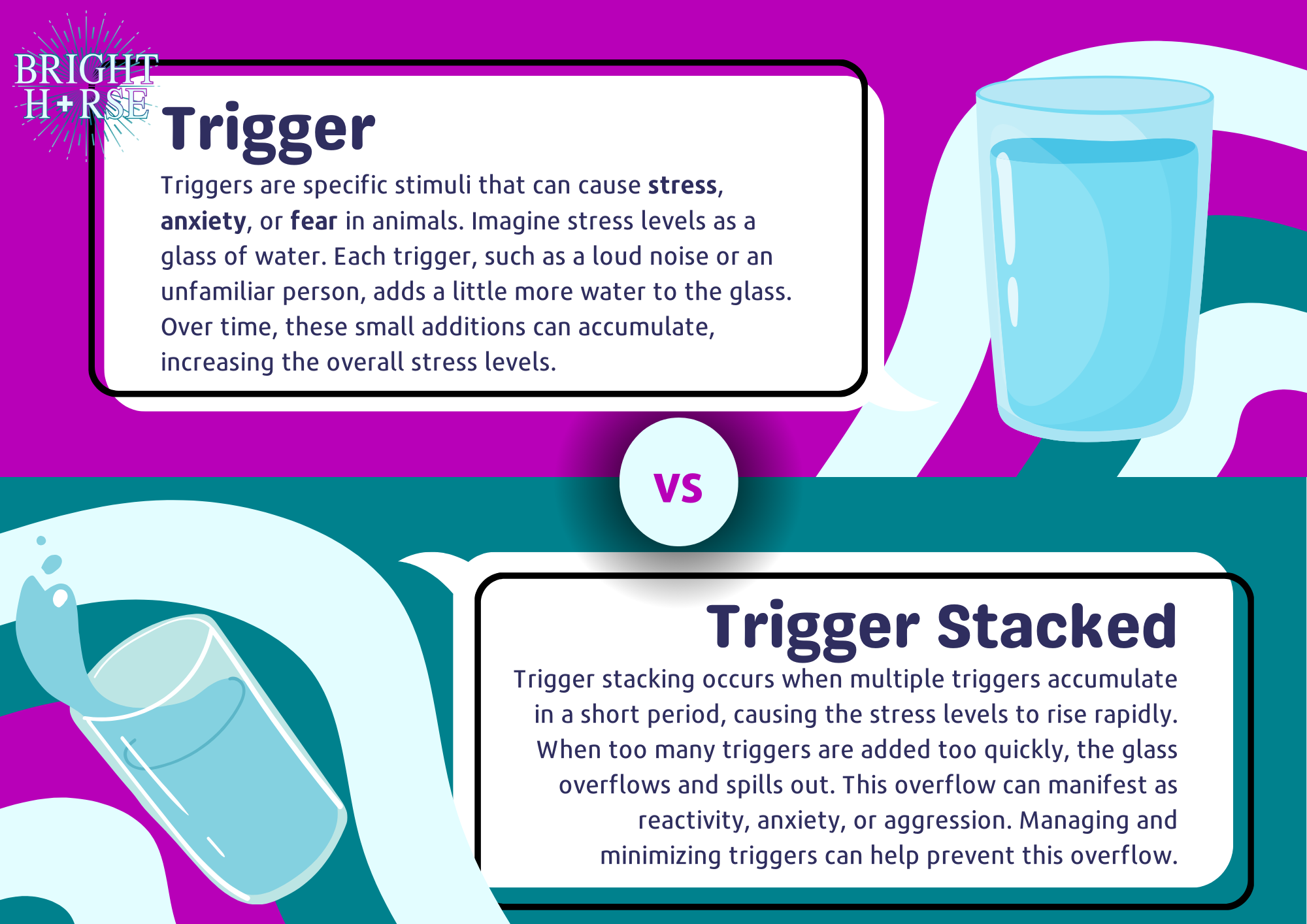
Applying Learning Theory to Desensitisation
Desensitisation builds on core principles of learning theory, systematically reducing a horse’s sensitivity to a stimulus that evokes fear or anxiety. It incorporates several scientific concepts to make the process gradual, clear, and rewarding for the horse:
Habituation:
At its core, desensitisation is a form of habituation. By repeatedly exposing the horse to a non-threatening version of the stimulus, they learn to ignore it over time. For instance, introducing clippers by running them at a distance and rewarding calm behaviour helps the horse adjust gradually.
Classical Conditioning:
Pairing a previously scary stimulus with a positive experience—like offering a treat or praise—creates a new, positive association. Over time, the horse associates the stimulus with something pleasant instead of fearful.
Shaping:
Breaking down the desensitisation process into smaller steps allows the horse to make incremental progress. Each small success builds confidence and reduces the likelihood of overwhelming the horse.
Positive Reinforcement:
Rewarding the horse for calm behaviour reinforces the desired response and encourages further learning.
The Desensitisation Process: Step-by-Step
Move Towards the Object
Start by walking your horse toward the object at a calm, steady pace. Pay close attention to their body language. As soon as they begin to hesitate or resist, you’ve reached their comfort threshold. This is the point where their curiosity meets manageable discomfort—an ideal starting place for training.
Reinforce with Rewards (+R)
When your horse hesitates, ask for a simple step back using a gentle rein-back cue. Be patient—they may need a moment to process the situation. When they take the step back, mark the behaviour with a clear “Yes!” and offer a treat or reward. This reinforces their effort and builds positive associations with the training process.
Move Towards and Away
Repeat the approach three times, stopping at the “sticky” point and asking for a step back each time. Be mindful of your timing: release any pressure on the reins or lead rope immediately when your horse responds correctly. Mark their success with a cheerful “Yes!” and a reward.
Extend the Challenge
Once your horse is consistently comfortable at the sticky point, encourage them to take one step closer to the object. Celebrate this progress enthusiastically and reward them. Continue this process gradually, allowing your horse to approach the object step by step, always reinforcing their positive efforts.
Considerations for Effective Desensitisation
Safety: Always prioritize safety by starting with a low-intensity version of the stimulus and gradually increasing its intensity. Be prepared to step back if the horse shows signs of stress.
Consistency: Maintain a consistent approach with clear cues to help the horse understand what is expected.
Patience: Desensitisation is a gradual process. Working at the horse’s pace ensures they remain calm and engaged throughout.
Individuality: Every horse has unique sensitivities and learning speeds. Tailoring the process to the individual horse fosters better results.
By understanding the horse’s natural instincts and applying these principles of learning theory, trainers can transform fear into confidence. This approach not only helps horses overcome their fears but also strengthens the horse-human bond, creating a foundation of trust and effective communication.
Behaviours to Watch For
Throughout desensitisation, keep an eye out for signs of stress or discomfort. And please look for help from a behaviourist if your horse is struggling.
- Excessive tension - Tight, rigid muscles.
- Rapid breathing or snorting - Indicators of anxiety.
- Wide eyes and high head carriage - Signs of alertness or fear.
- Freezing - A lack of movement, indicating uncertainty.
- Evasion behaviours - Side-stepping, spinning, or backing away quickly.
If you notice these signs, reassess the challenge. I call it ‘Ask an easy question’ which basically means ask your horse an easier question you know that know that answer too without adding more of a challenge. This can help re-engage them in the task and reduce the stress. The goal is to progress at your horse’s pace, ensuring they remain calm and engaged.
Building Confidence Through Gradual Progress
By systematically and patiently working through the desensitisation process, you’ll help your horse build resilience and trust. Over time, they’ll learn to approach new challenges with curiosity rather than fear.
In Part 3, we’ll delve deeper into how horses communicate through body language and how you can use these cues to strengthen your bond and training effectiveness.

